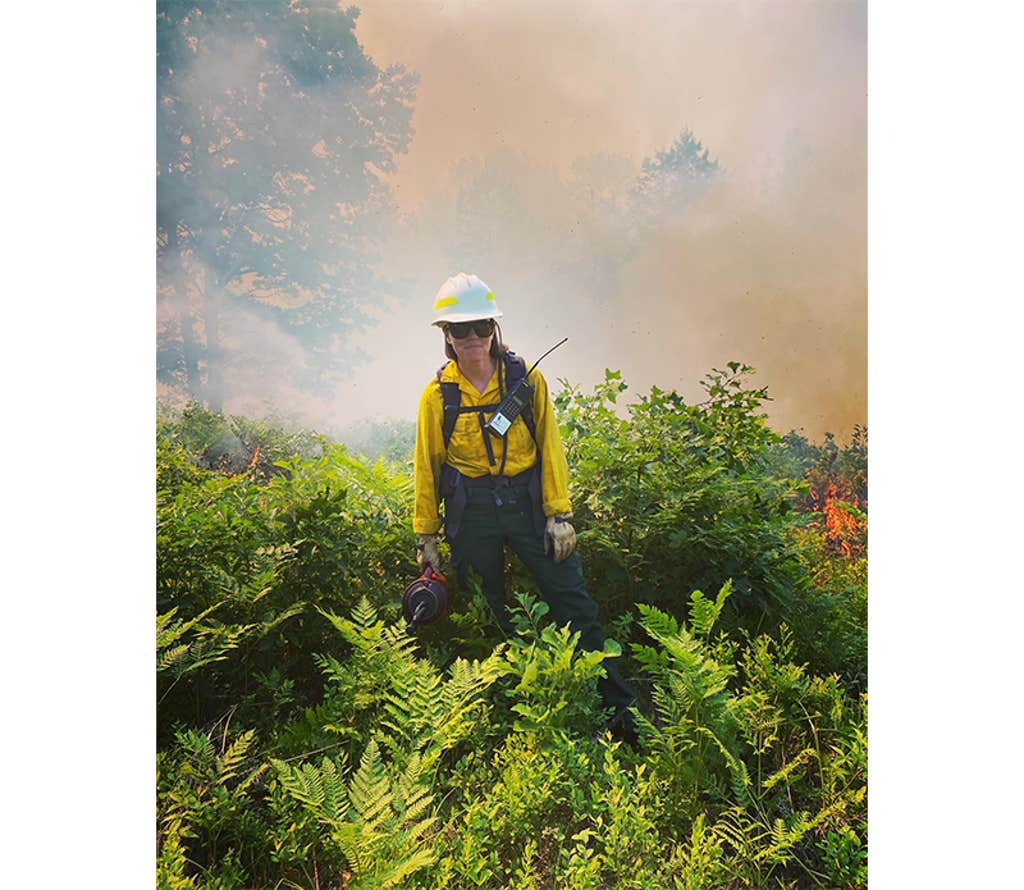1 Disturbance Is a Part of Life on Earth (and Often Good!)
Early on in my reporting for Ignition: Lighting Fires in a Burning World, I took a standard wildland firefighting class called RX 310: Introduction to Fire Effects. In it I learned about fire regimes—the frequency and intensity of fires in any given ecosystem. The boreal forest, for example, has a fire regime of low frequency—fires burn about every 50 to 150 years—and high intensity. Meanwhile, longleaf pine forests have regimes of low intensity but very high frequency—maybe just a couple of years in between. In both types of forest, fire influences things like soil, water, and carbon while also opening up canopies, delivering nutrients, and stimulating seed and root growth. These effects often increase the diversity of plant life, which can benefit everything from insect pollinators and elk to woodpeckers and bison. Pyrodiversity—the relationships between fire regimes, biodiversity, and food webs—can support the health and resiliency of ecosystems.
One of the secrets of wildland firefighting is how insanely fun it can be.
Like most people, I grew up with the vague impression that wildfires are bad. This idea that disturbances like wildfires could be a positive ecological phenomenon was completely new to me. I learned that in ecology, “disturbances”—not just fire, but wind, drought, and floods—are considered important and often necessary spatial and temporal shapers of ecosystems. Fire has been a part of the Earth ecosystem for hundreds of millions of years. I now think it is important that the public understanding of wildfire expand to embrace the fact that not every wildfire is a disaster.
Likewise, when journalists and media outlets cover these events, they should consider the intensity and magnitude of the disturbance and how far outside the historical average it is. Is a wildfire within an average fire-return interval? Have people changed or altered a place’s fire regime by suppressing fires? Is a fire performing necessary ecosystem functions? We need this greater understanding of the context of fire science in order to have better policies in place that protect our landscapes and communities into the future.
2 Landscapes We Think of as Wild Are Thick With Human History
In the course of reporting my book, I tried to volunteer on as many prescribed burns—intentional, controlled fires to achieve ecological benefits—as possible in order to learn about fire ecology and landscape management. One of the places I went was the Klamath Mountains in northern California to work with a crew burning to support oak woodlands, hazel groves, and prairies on the Yurok Reservation. One morning, I was outside a local community center, drinking coffee, and admiring what seemed like a beautiful scene: the sun rising over a mountainside completely covered in a blanket of verdant forest. But my friend standing next to me said, “I used to think all this green was natural. I had no idea.”

The forest we were looking at was actually desperately overcrowded with trees, a condition afflicting many forests across the western United States. In large part, this is the result of fire-suppression policies often enacted to protect the value of timber. In contrast, the Yurok people have been lighting intentional fires for thousands of years in order to support forest health, food production, hunting, basket-weaving, fishing, travel, and ceremony; they describe themselves as a “fire-dependent culture.” Today, these dense forests not only directly threaten the Yurok’s livelihoods and cultural practices, they make the whole landscape more susceptible to drought and extremely dangerous megafires.
Our national parks are not emblems of former “wilderness.” They are places shaped by people.
As I started to learn the histories of the places I traveled to for my reporting, I saw the term “wilderness” as much more of a cultural construct than a natural state in the world. I think this can be challenging for Americans who are taught that the North American continent was wilderness until the arrival of settlers and the start of the Industrial Age. Things like the number and species of trees, the presence or absence of certain plants, the existence of prairies, the types of forest, were intentionally influenced by people for many, many thousands of years.
When I went to the Grand Canyon and Yosemite to report for the book, it really hit me: Our national parks are not emblems of a former “wilderness.” They are places shaped by people, the eventual forced removal of Native Americans, fire-suppression policies, and shifting conservation ethics. Learning and acknowledging this history is a part of making smarter decisions as a society about how to conserve our resources and lands.
3 Wildland Firefighting Is Extremely Hard and Extremely Fun
In April 2023, researchers published an article in Comprehensive Physiology that detailed the physical demands on wildland firefighters. The researchers followed a hotshot crew—an elite type of firefighting force often sent out on complex wildfire assignments—in Montana and measured the physical strain on and total energy spent by the crew as they hiked with gear, dug line with hand tools, used chainsaws, and conducted burn operations. What they found was that the work of a hotshot on a single day of wildfire operations was equivalent to a day of riding in the Tour de France. A hotshot can burn 6,000 calories a day! Whereas the Tour de France lasts less than a month, a fire season can go for five or six months with hotshots working 14 days on and two days off.
My own brief experience working with a wildland firefighting “handcrew”—so-called because they perform a lot of fire duties using hand tools rather than engines—gave me an on-the-ground perspective of the enormous physical and mental discipline and energy the job demands. There is no question that wildland firefighters are underpaid for the extreme risks they take, the many hardships they face, and the deep commitment many of them demonstrate to their jobs. That being said, I think one of the secrets of wildland firefighting is how insanely fun it can be. You get to work and hike in some of the most beautiful and remote places in North America, sometimes sleeping and eating under the stars, while interacting with a fascinating and powerful element that few people witness up close: fire. The work ethic, responsibility, and mission of the job has the ability to bring out the best in people. Crews often develop deep trust and bonds over a season that can result in meaningful and long-lasting friendships. Wildland firefighting is the complete opposite of an office job: extremely dirty, challenging, and some of the most fun I’ve ever had. ![]()
Lead photo: Gorodenkoff / Shutterstock




























